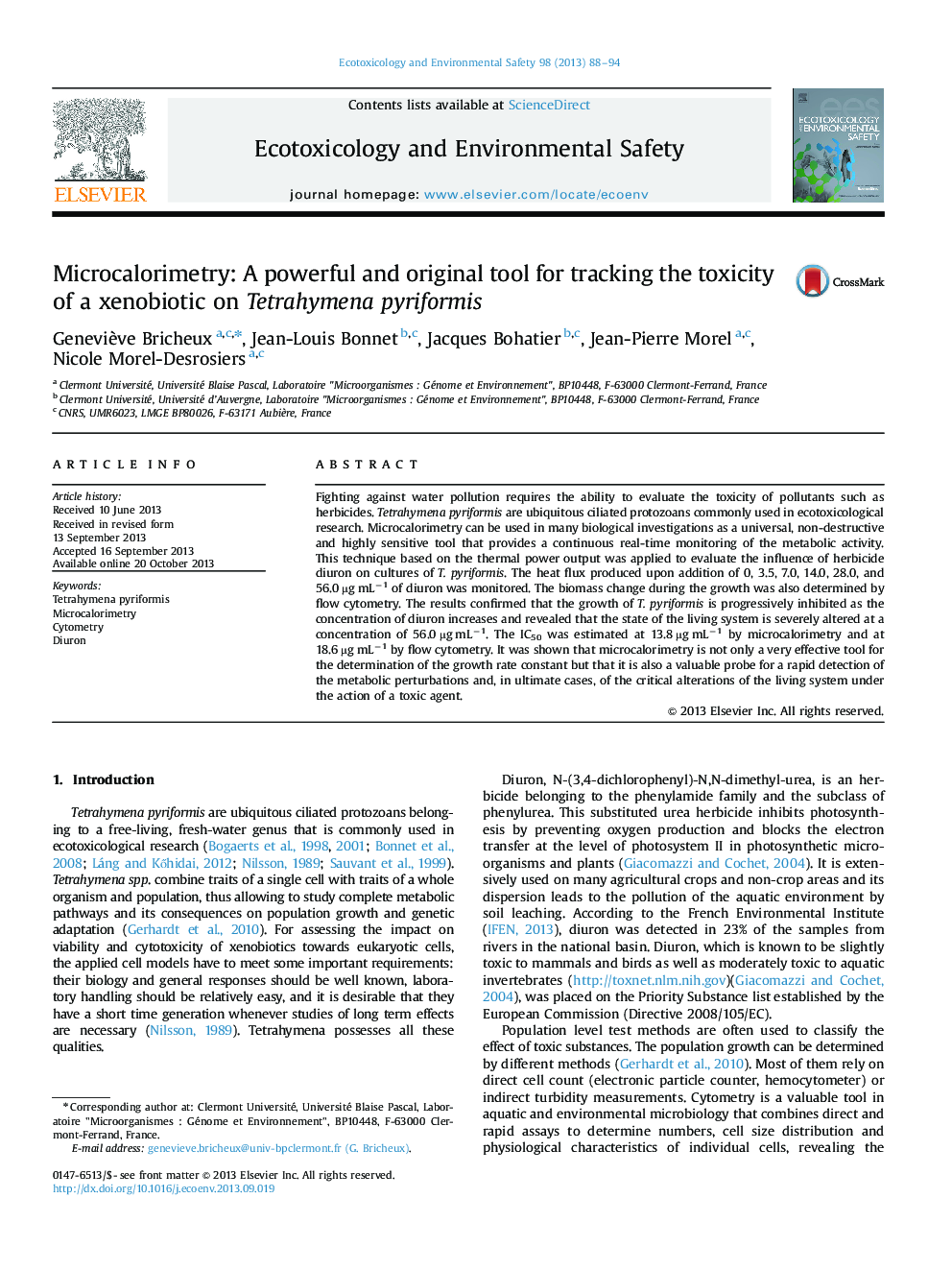| Article ID | Journal | Published Year | Pages | File Type |
|---|---|---|---|---|
| 4420382 | Ecotoxicology and Environmental Safety | 2013 | 7 Pages |
•We propose an original method to investigate ecotoxicological perturbations.•Tetrahymena are ciliated protozoans with traits of a whole organism and population•Microcalorimetry is a non-destructive/sensitive tool to monitor metabolic activities•Microcalorimetry can be used for rapid detection of metabolic perturbations
Fighting against water pollution requires the ability to evaluate the toxicity of pollutants such as herbicides. Tetrahymena pyriformis are ubiquitous ciliated protozoans commonly used in ecotoxicological research. Microcalorimetry can be used in many biological investigations as a universal, non-destructive and highly sensitive tool that provides a continuous real-time monitoring of the metabolic activity. This technique based on the thermal power output was applied to evaluate the influence of herbicide diuron on cultures of T. pyriformis. The heat flux produced upon addition of 0, 3.5, 7.0, 14.0, 28.0, and 56.0 µg mL−1 of diuron was monitored. The biomass change during the growth was also determined by flow cytometry. The results confirmed that the growth of T. pyriformis is progressively inhibited as the concentration of diuron increases and revealed that the state of the living system is severely altered at a concentration of 56.0 µg mL−1. The IC50 was estimated at 13.8 µg mL−1 by microcalorimetry and at 18.6 µg mL−1 by flow cytometry. It was shown that microcalorimetry is not only a very effective tool for the determination of the growth rate constant but that it is also a valuable probe for a rapid detection of the metabolic perturbations and, in ultimate cases, of the critical alterations of the living system under the action of a toxic agent.
